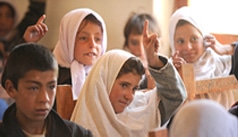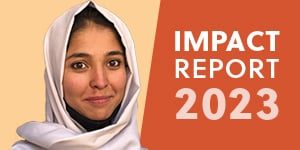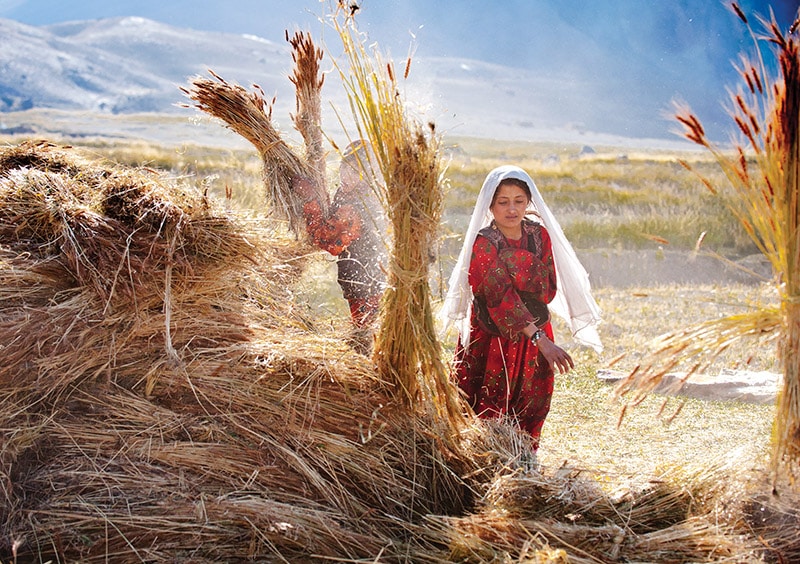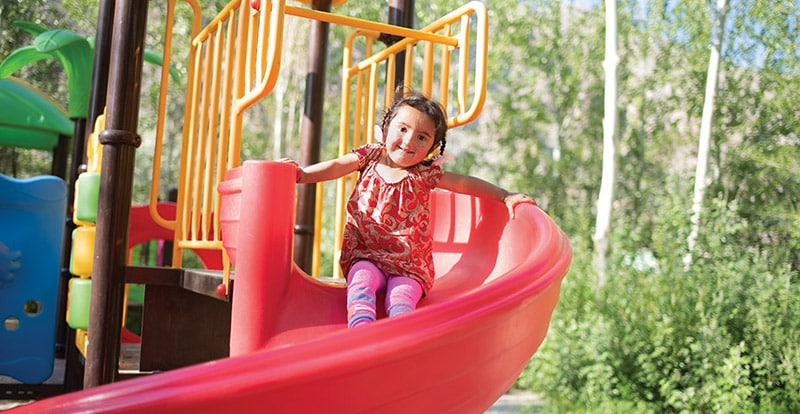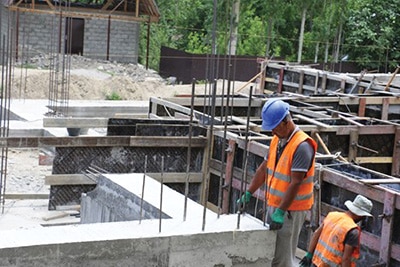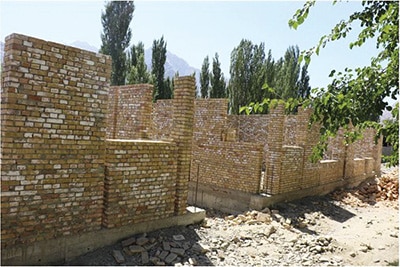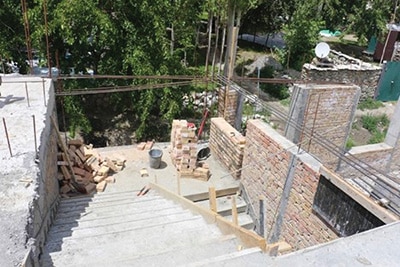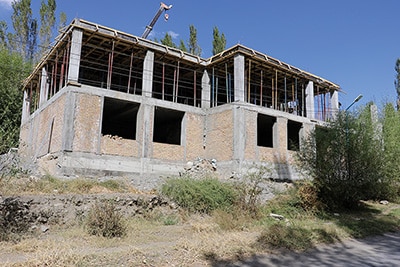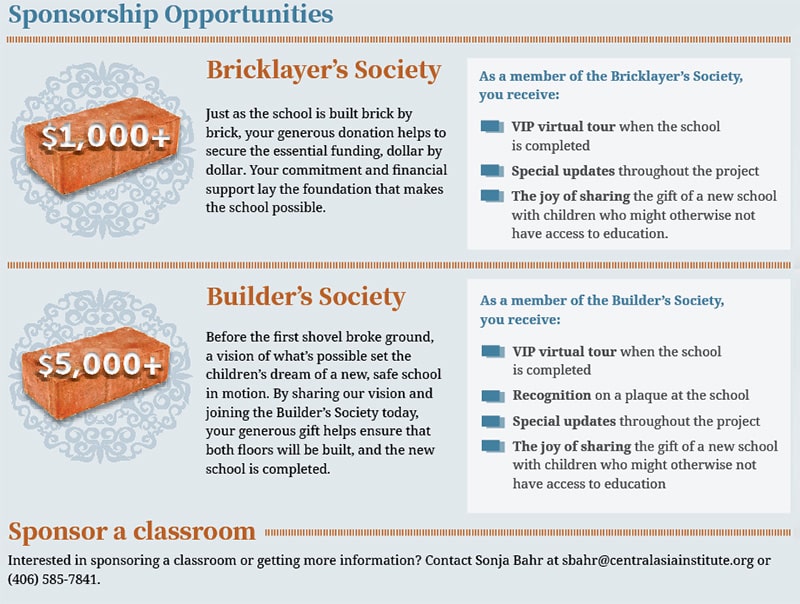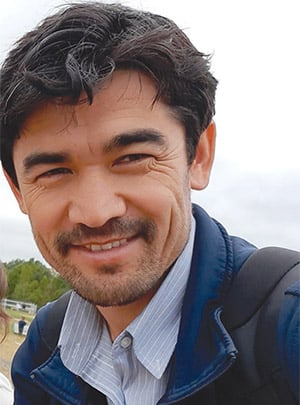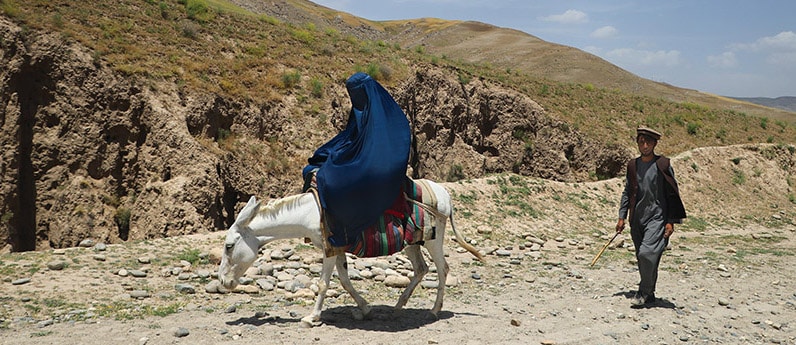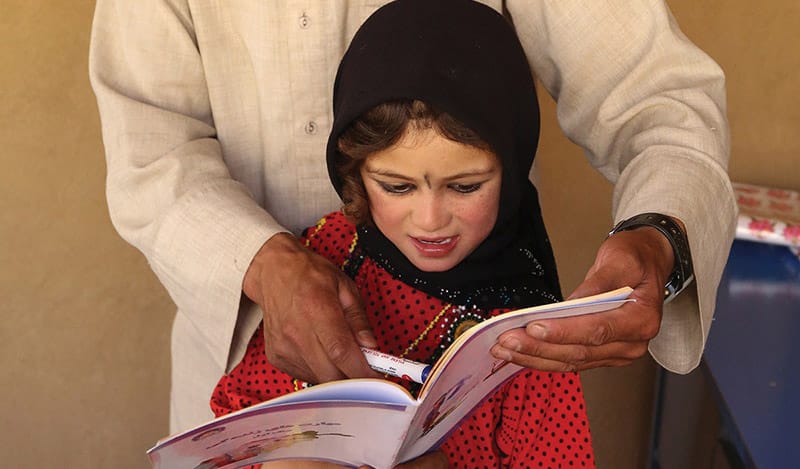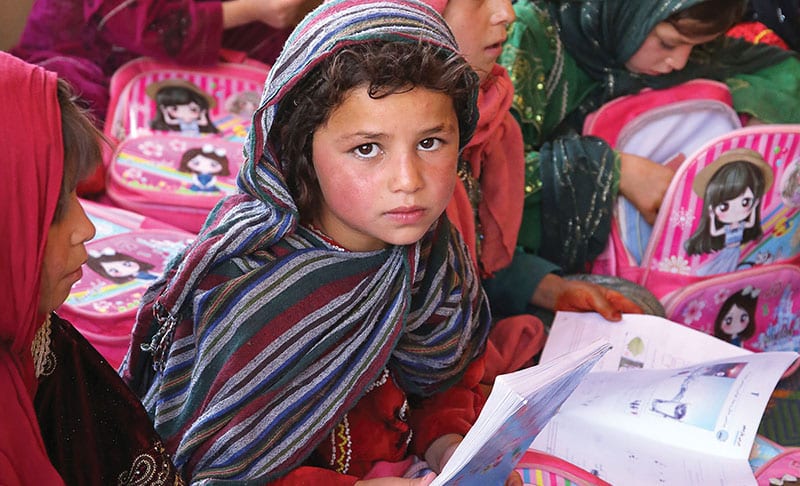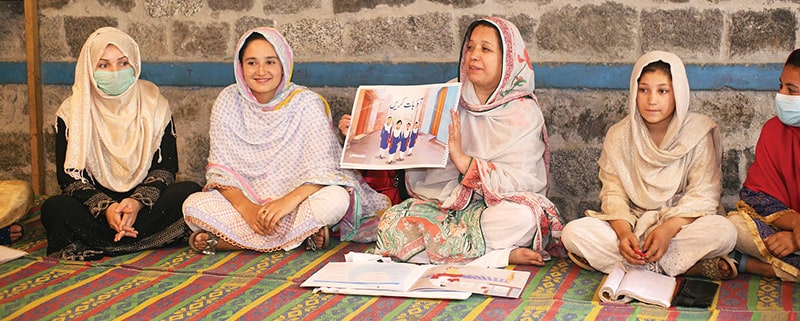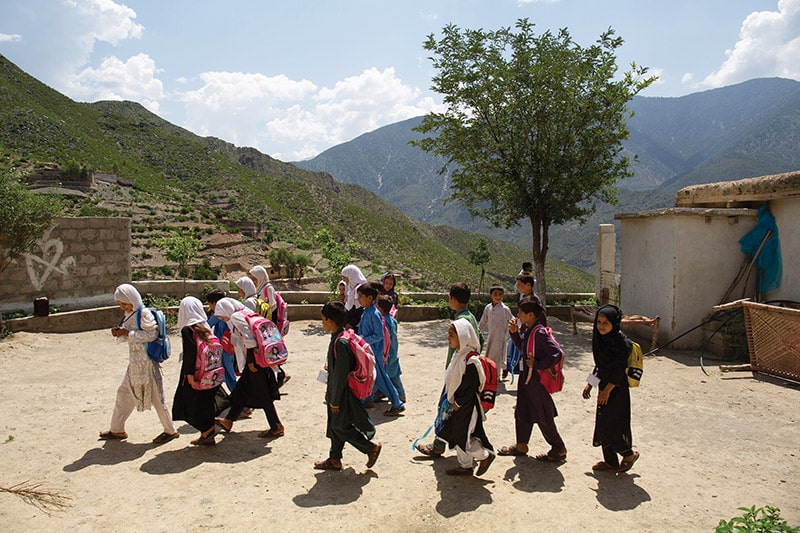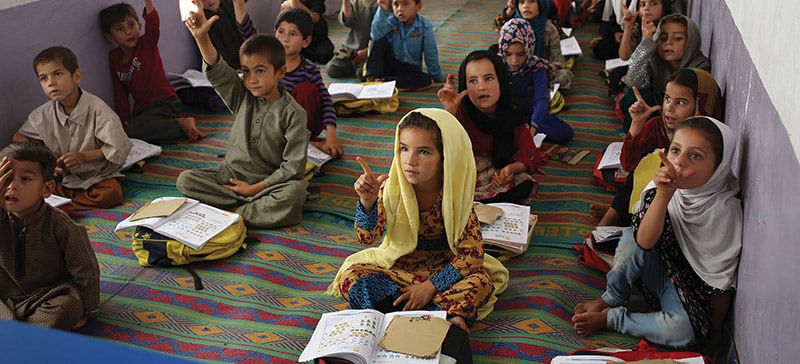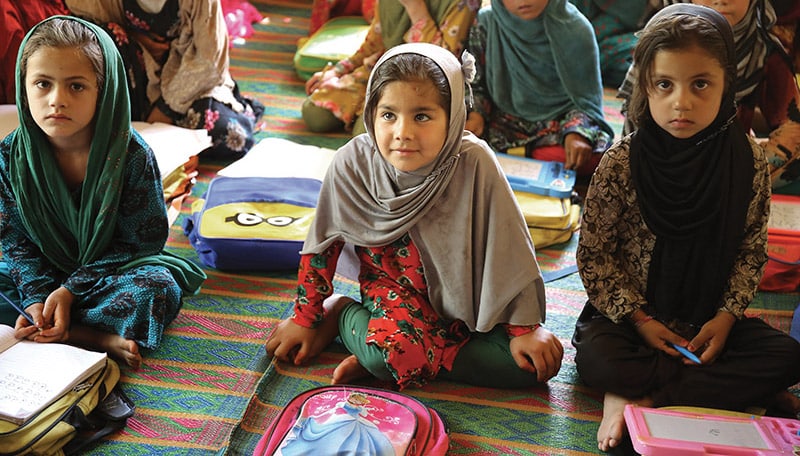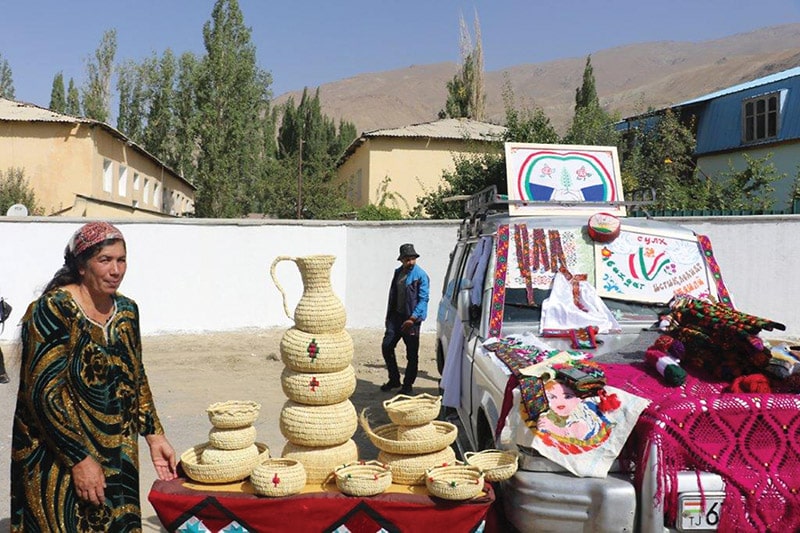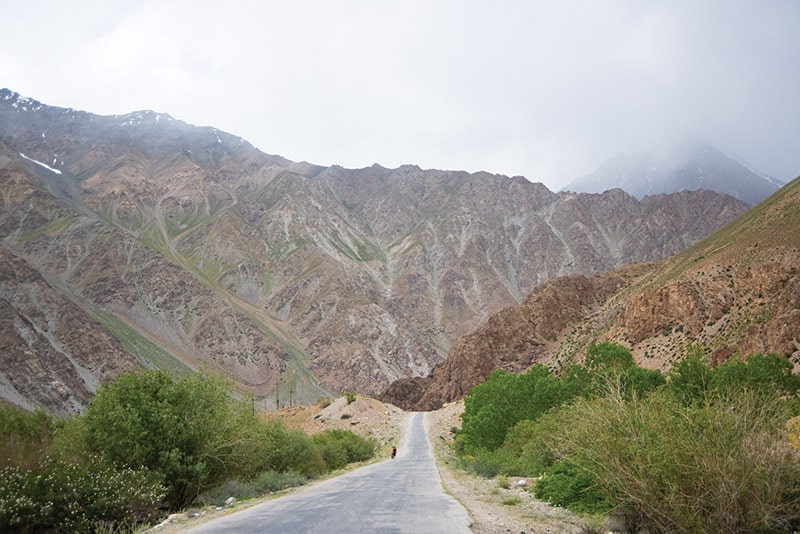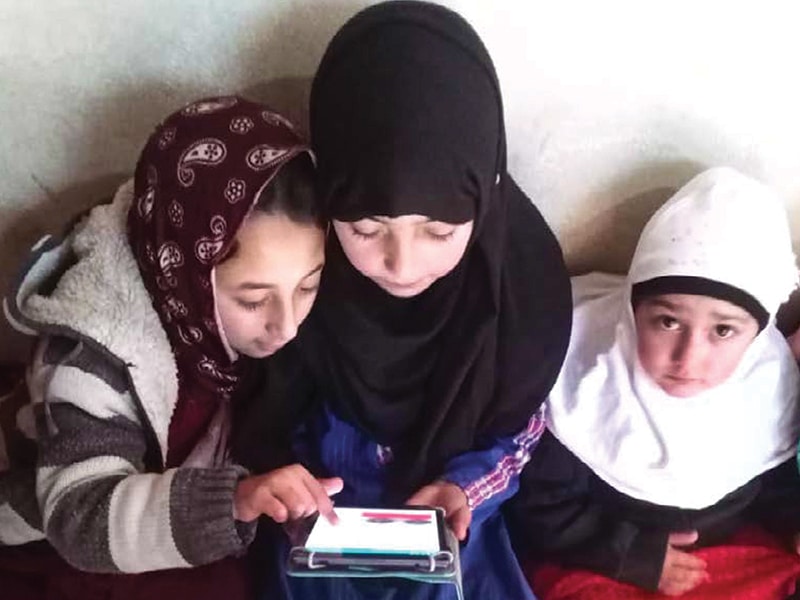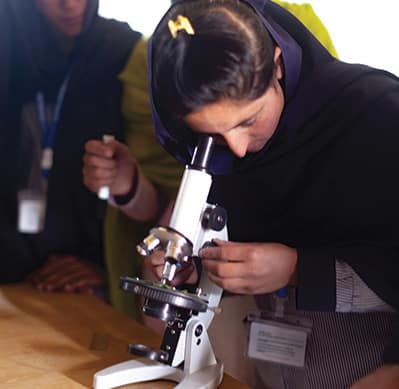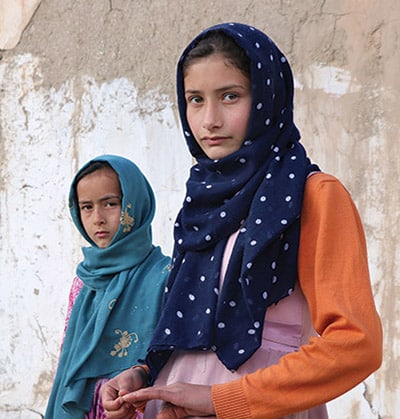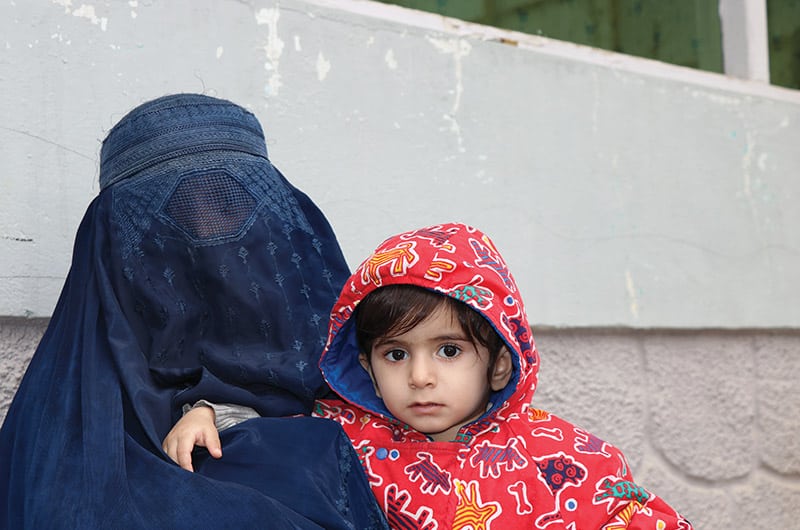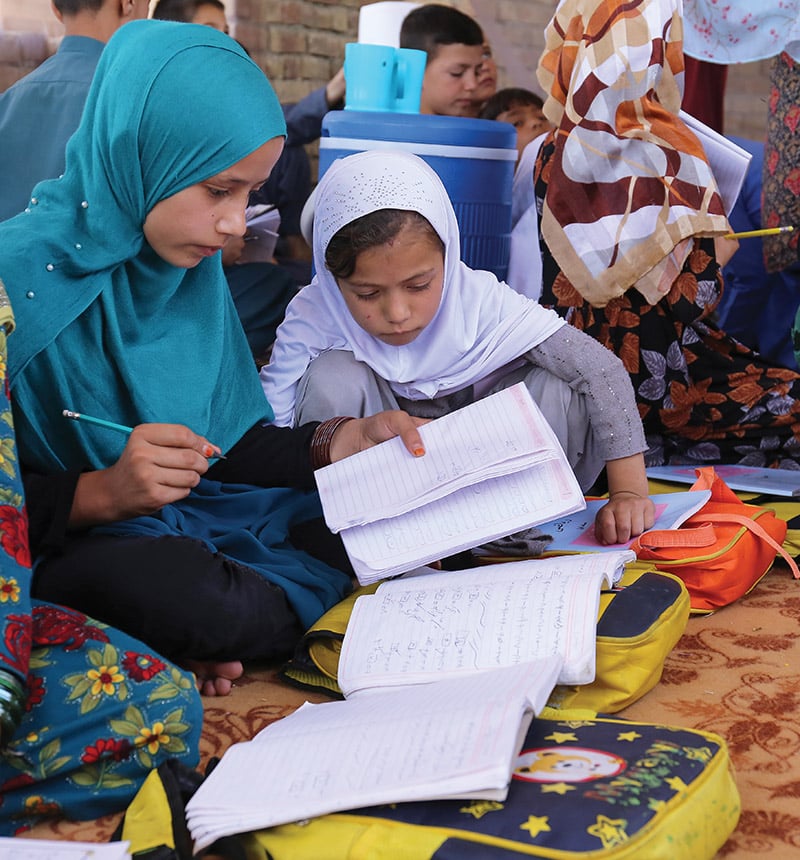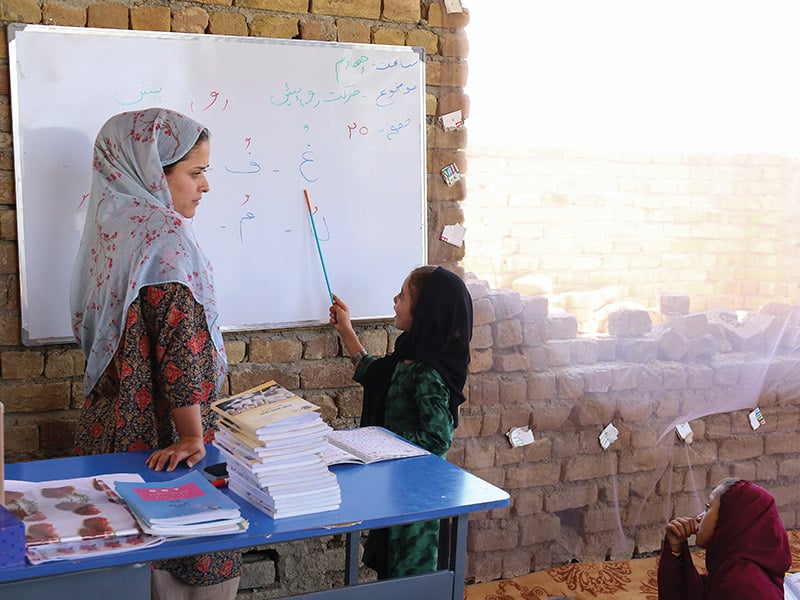With every new school that comes to a village, there are always obstacles that must be surmounted. One of the biggest is the conservative attitudes of the villagers and their long-held belief that girls should remain at home to do the housework and should never come in contact with boys when attending school. Some believe that educating girls is going against Islam.
According to Enayat-U-Rahman, a teacher at a girls community-based education (CBE) school, this couldn’t be further from the truth. “From an Islamic perspective, education is important for both boys and girls. But for girls, it is more important,” he said. “If a mother is educated, the child will learn from its mother, and she will encourage them to go to school also.”
Mohammad Gul, an imam and teacher at the CAI-supported school held inside a mosque in Kata Sang village, disagrees with the Taliban’s decision to ban girls from secondary education, saying there is no Islamic basis for it. “I told the villagers this. And they trust me because I am the imam in the mosque here,” he said. “When this school opened, many older girls came to me and asked to be enrolled in this class because there was no high school for them. The girls in this class are very sharp—even smarter than the boys.”
Mirza Mohammad, the imam at the mosque in Ashaba village in Parwan province, sees the Taliban’s decision as political and not in accordance with Islam. “Under Islam, girls have a right to education and work,” he explained. “It’s important for girls to get an education so that they and their children know their rights, including property rights and inheritance rights. More importantly, an education gives them a purpose in their lives to be someone. My daughter can choose what she wants to be in the future.”
Sometimes, the obstacles to providing an education to girls are life threatening. One man from Sondry village in Dara-I-Pech district of Kunar province described what happened when his community established a CBE school in December 2020, the first school in the village. “At the time, the Taliban was in the mountains around the government-controlled village, and they sent threatening letters to us saying that we must stop girls’ education here,” he recalled. “They said they did not want female teachers and doctors working in the village. They threatened to kill us, but we did not stop. Like my children were, I wanted all the children of this village to be educated, and that’s why we continued our work. And the community supported us also to stand against the Taliban.”
In fact, the school was such a success, even some of its most fervent critics changed their minds. “The funny thing is that now two of the Taliban that were threatening us want us to register their daughters in this class,” the man said. “They support the school now and they want secondary schools to be opened because they want girls from their own villages to be teachers and doctors.”
